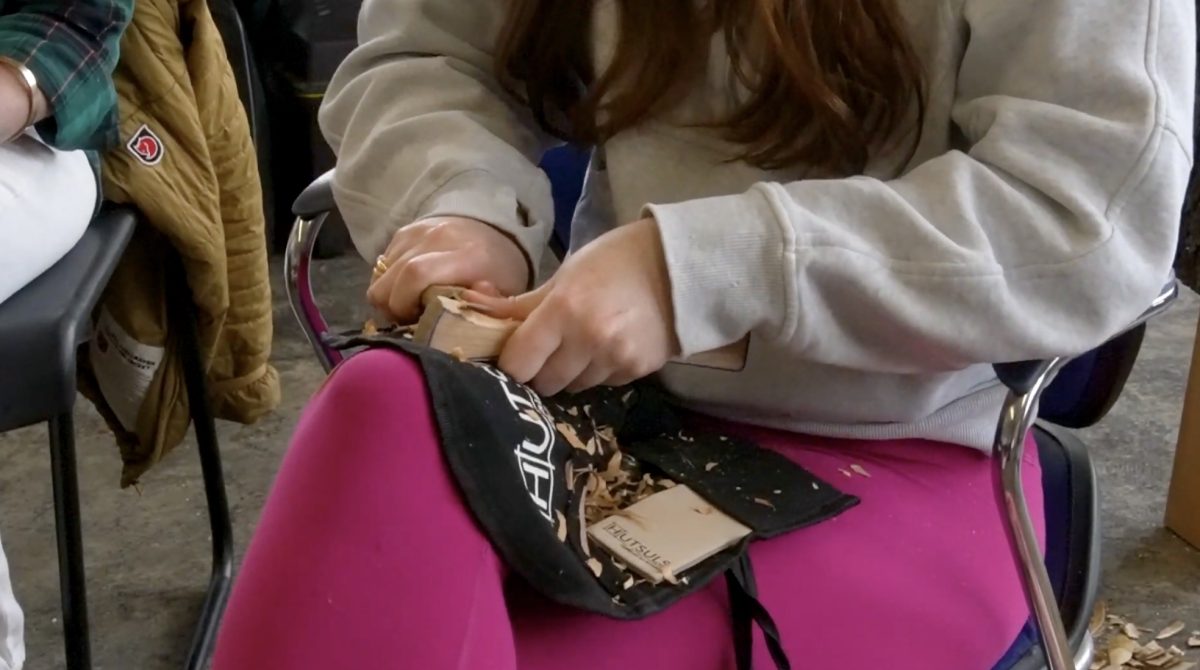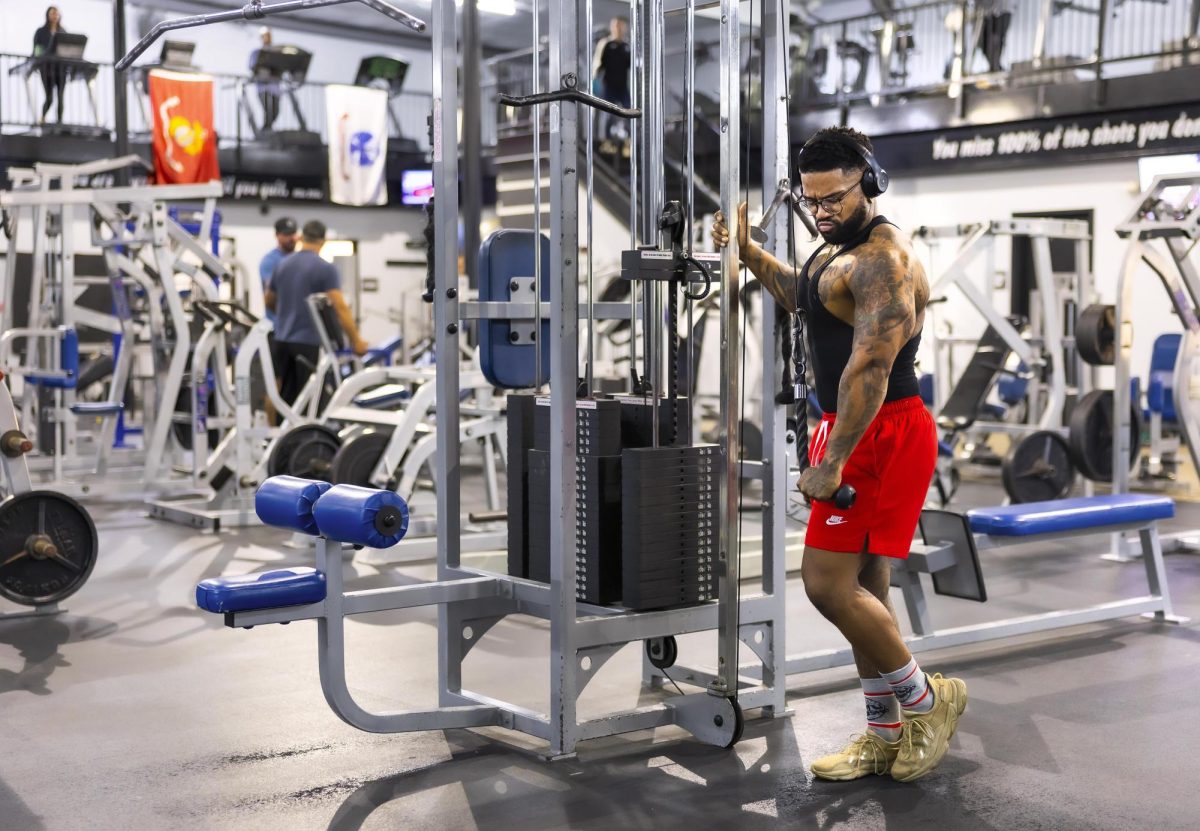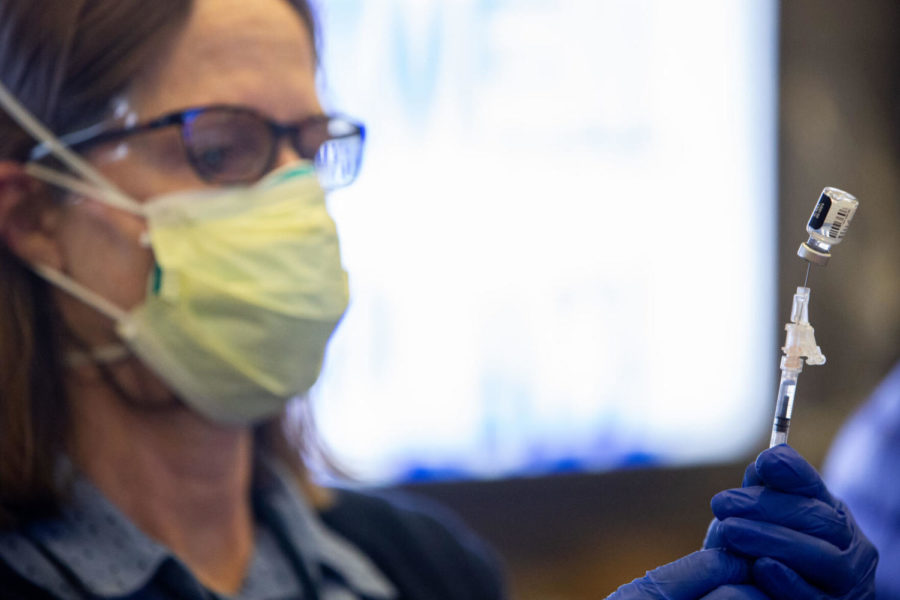Where is the data on UK’s COVID-19 vaccine clinics?
A pharmacist prepares a syringe for administering to recipients of UK’s COVID-19 vaccination clinic on Saturday, Jan. 30, 2021, at Kroger Field in Lexington, Kentucky. Photo by Jack Weaver | Staff
March 1, 2021
Beginning in February, the University of Kentucky has partnered with the Lexington government to provide pop-up clinics as part of an effort to reduce the racial inequality of COVID-19 vaccinations in Fayette County.
This is good. Racial disparities in vaccine distribution are especially troubling given that communities of color are more likely to be exposed to COVID-19 and minorities are dying of the disease at a higher rate than white Americans. Only 14.6 percent of Lexington’s population is Black, but they account for 17% of the city’s cases, 26% of hospitalizations and 21% of deaths.
Yet Black residents account for only 5.7% of Lexington’s first-time COVID-19 doses, according to mayor Linda Gorton. Special clinics dedicated to bridging this gap are vital, but there is an underlying issue that needs to be addressed.
The public data on racial inequity is limited, primarily because the University of Kentucky – the organization partnering with city government to reach minority demographics with pop-up clinics – does not publish specific metrics on its vaccine distribution. UK’s clinic has not provided a racial breakdown of its doses given, nor does it regularly publish specific or timely data on other metrics.
As the largest distributor of COVID-19 vaccines in Lexington, this is a problem.
The last data update published on UK’s dashboard that included a specific number for vaccinations done by UK was on Jan. 28, and the relevant information was one line: “UK has vaccinated nearly 37,000 people.”
That data is a month old. Since then the clinic has expanded its hourly vaccination capacity, meaning that the vaccination rates provided in that update cannot even be used to estimate a total since then. Other than an update celebrating the 100,000th dose given on March 4, no totals have been released.
Moreover, the university’s clinic has published no data about the breakdown of its vaccinations. Not by race, not by age, not by relation to the university – all we know is that the university is vaccinating all employees and some students. But how many students? Have more students been vaccinated than minority community members? Have more white UK faculty been vaccinated than UK’s minority staffers, like many dining and custodial workers? Have more athletics staff received vaccinations than dining staff?
One could imagine many problematic scenarios arising out of vaccine distribution. But the problem here is we just don’t know.
The university has not voluntarily published specific metrics on its vaccine demographics and has repeatedly denied the Kernel’s request for more detailed numbers. On Feb. 9, a UK spokesperson told the Kernel that UK had administered 20,000 total doses to UK community members, a “large percentage” of those being healthcare employees.
At that time, doses among UK community members were 40% of total doses given by UK. The most thorough data yet was given to UK’s Board of Trustees on Feb. 19 by Eli Capilouto, who said UK had given more than 60,000 total doses. One-third of doses were to people over 70, one-tenth to K – 12 educators and “several thousand” to UK campus employees. Doses given to UK HealthCare aside, how are we to know that UK is administering vaccines equitably to the community and to students if they don’t provide the data?
Furthermore, this closed information policy undermines the university’s claims to be transparent and provide continual updates on all aspects of its COVID-19 approach. Not only has data on vaccinations been slow and limited, but updates to the COVID-19 dashboard for cases among students have lagged by five and even six days – despite the university saying the lag would drop from last semester’s three-day wait and updates would be posted within one or two days.
We have all trusted, and we have trusted well so far. The university runs the largest COVID-19 vaccination site in the region and does it efficiently. The facility is well-organized, appointments are simple to make and so far the university’s IT system has prevented crashes like those seen at other sites. But this lack of transparency could easily become a slippery slope.
By virtue of its expertise and logistical might, the university is in a singular position to control vaccine output in our area. If UK were to take advantage of its position in this case or in the future, we would have no way of knowing. Vaccine information is especially vital because vaccines are the most valuable currency in the U.S. Without shared and transparent data, how are we to know the the university is not abusing its power as a vaccine distributor to prioritize select groups, like students, to ensure they can keep campus open? A prioritization that would come at the expense of vulnerable community members like the minority populations that the virus has already taken a heavy toll from.
To be clear, the above scenario is hypothetical. We don’t know what the data would say about UK’s vaccination efforts because we don’t have the data, but we should. Specific, updated metrics would streamline efforts to reduce the racial gaps, and any other potential gaps, by putting numbers in the hands of the public.
Vaccination data also speaks to a greater struggle of access during the COVID-19 pandemic and how information is vital to communities for public and personal heatlh. Throughout the pandemic the university has taken opportunities like this to reduce access to information. Kernel reporters have been made to go through the public relations department for all manner of stories that we previously did not have to. The university limited media access to its vaccine clinic under HIPAA, despite the fact that this situation does not fall under HIPAA and vaccination sites across the country did not have the same restrictions.
The university has a chance to make up for this with increased visibility for its COVID-19 vaccinations. Let people see the numbers for themselves. Publish an at-least weekly update including total vaccinations, vaccinations by age, by race and by relation to university (student, faculty and staff). If the university is working to reduce racial disparities vaccine distribution, show us that racial disparity in the clinic’s numbers – and update us so we can judge for ourselves if institutions are doing enough to close the gap.
It’s really a simple equation. Public health, public university, public knowledge. The university needs to do more to uphold its role in the process. Start with the data. We’ll go from there.






















































































































































